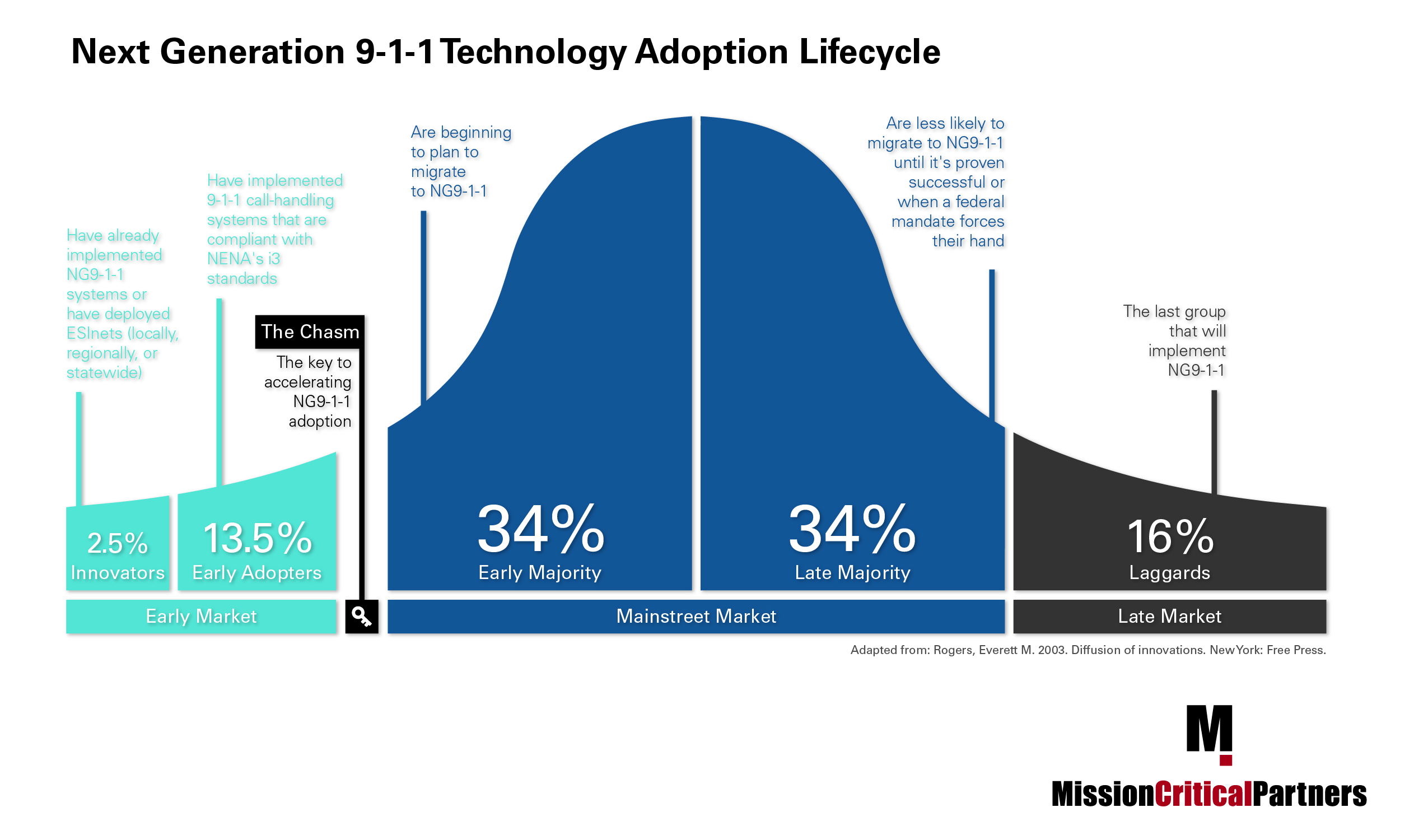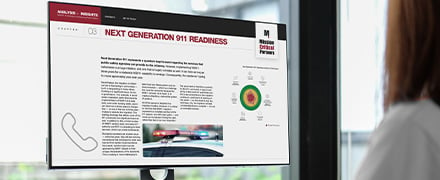How We Predict NG911 Will Play Out in the Public Safety Industry [Infographic]
Posted on July 20, 2017 by Morgan Sava
From Next Generation 911 (NG911) to FirstNet, text-to-911 and all the emerging technoFrom Next Generation 911 (NG911) to FirstNet, text-to-911 and all the emerging technologies being implemented in the public safety industry, the way a 911 call is processed and dispatched is changing dramatically. The evolution represents a quantum leap forward in the level of service the nation’s public safety answering points (PSAPs) can provide to the public and first responders. But the migration is being slowed considerably by some of the same difficulties it’s faced before.
How can the industry buck that trend?The public safety industry has always struggled with technology evolution: it takes significantly longer than it should and the process is far inefficient. Case in point – it took more than four decades to make 911 service available to the entire country.
We studied a well-known theory published by Everett M. Rogers, a professor of rural sociology in 1962 at the Ohio State University, to provide insights into why. His theory, called the "Diffusion of Innovations", describes how innovation adoption plays out in any given social group. The model has been used to demonstrate how industries adapt to transformative change, such as new technologies, and it is particularly relevant to how the implementation of NG911’s is taking place within the public safety sector.
In general, the theory discusses five key groups and classifies them based on common characteristics they share when adapting to a significant change like NG911:
- Innovators: These adopters are not only technology enthusiasts—they are also visionaries. They represent the first 2.5 percent of those who adopt any given innovation, in the case of this discussion, NG911. In the public safety sector represents those who have already implemented NG911 systems or deployed emergency services IP networks (ESInets) either on the local, regional or statewide level.
- Early adopters: This group approaches new technologies with more caution than the innovators. However, when they make the decision to move forward, it signifies that the innovation is the real deal. This group represents 13.5 percent of adopters; and within public safety communications, this audience has already implemented a system that’s compliant with the National Emergency Number Association’s (NENA) i3 standard.
- Early majority: This audience is pragmatic and deliberate in their thinking. They want to make sure that the innovation will work before they proceed. Within the public safety sector, it’s for good reason. Mission-critical means just that – the technology must work every time. For that reason, many public safety agencies won’t transition to NG911 until they are sure that it will. This audience represents 34 percent of the industry.
- Late majority: Skeptics at heart, this group will only adopt a technology after it’s not only proved it is ready, but after an economic or operational pressure forces their hand. They represent 34 percent of the industry, and in public safety, they are less likely to migrate until a federal mandate forces their hand.
- Laggards: This group typically is change-resistant, often lacking resources, primarily economic ones that play a key role in their avoidance strategy. They represent 16 percent of the market and will be the last group to implement NG911.
To help depict our prediction, we adapted Rogers’ chart from the Diffusion of Innovations book to Show how we expect NG9-1-1 adoption to take place. View it below and feel free to share as you build your roadmap to NG911.

A key element of this technology adoption curve is the chasm – also known as the gap between the early adopters and the early majority. If the chasm can occur at a faster pace, a domino effect that results is a rapid acceleration of adoption takes place.
In our recently released report, we investigate this concept and discuss what it will it will take for public safety and 9-1-1 to clear the chasm.
Where does your organization belong on the Next Generation 9-1-1 technology adoption lifecycle?
Related topics:
Klobuchar-Nelson Bill Contains a Hidden Gem for the 9-1-1 Industry
Smartphone 9-1-1 applications need oversight
This week's 9-1-1 service outage: another wakeup call for 9-1-1
Topics: Next Generation 911 Networks, Technology







